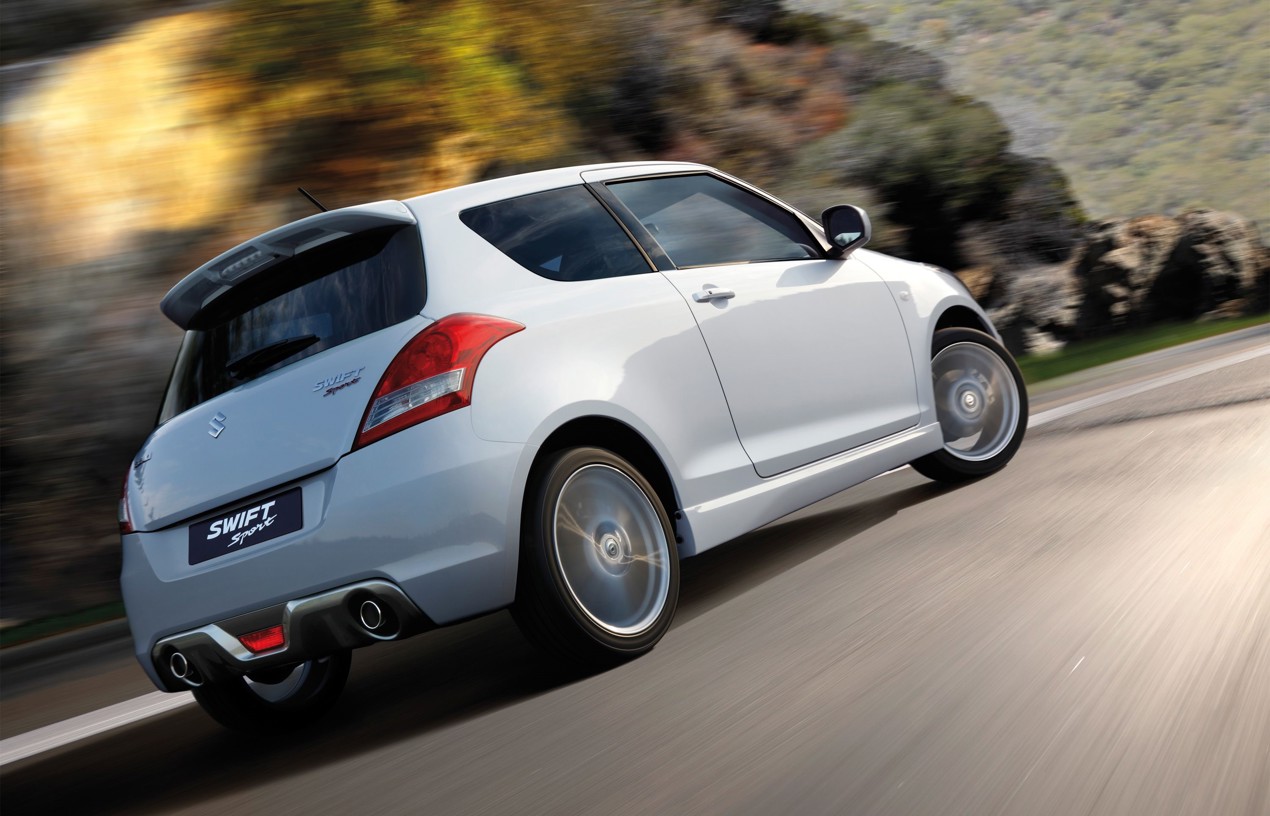The Suzuki Swift has always sold well as a New Zealand-model: the number one privately purchased Kiwi car for the last 20 years, in fact. Not to mention sought-after as a used import. It's arguably the closest thing NZ has to a classless car: it seems to appeal to virtually every demographic and age group.

And of course the focus is even more firmly on the compact-hatch right now, with the launch of a brand-new model for 2024.
What should you look for in a pre-loved Swift? The Swift badge has been around since the 1980s, in differing guises for different countries. But when Kiwis think Swift we're mostly thinking of the reborn model line that started back in 2005, with its perky "floating roof" styling and wheel-at-each-corner stance.
So let’s reset by calling that 2005 model number one (Suzuki NZ certainly does), followed by the second generation in 2010 and the just-replaced current third-gen from 2017.

We're focusing on that second-gen 2010-17 version here, as that's still the sweet spot where quality, price and supply overlap nicely. The super-cute first-gen is getting on now (although there are still some really nice ones out there), the third-gen still probably a bit too new for real bargains to be had; although more will certainly be coming onto the market as loyal Swifties trade into the brand new one.
But remember this: with 3.4m sold globally, the second-gen remains the best-selling Swift in history.

The cheeky (almost Mini-like) styling of the first-gen Swift was one of its biggest selling points according to Suzuki's research, so it kept the same look for its successor. But that first version is truly tiny, whereas the newer model was bumped up in size, including a 50mm stretch in the wheelbase. It's a much more practical proposition all-round.
It's hard to be too specific about powertrains in NZ as there's a bewildering array of models on the market, thanks to used imports. But most NZ-new models have a 1.4-litre engine, while a 1.2-litre is more common for ex-Japan cars. A 1.3-litre diesel (with a Fiat engine) was also offered in NZ for a short time.

You also have to separate the mainstream Swift from the even more highly regarded Sport, which has a larger 1.6-litre powerplant, special suspension and extra equipment. This generation of Sport was also the first to offer an automatic transmission - although enthusiasts raised their eyebrows at the time because it was a continuously variable gearbox. It's still a fun car, although truly keen drivers will prefer the close-ratio-manual.
If you’re after something a bit special you could also keep an eye out for the 3dr Sport. It was imported in very limited numbers by Suzuki NZ (manual only) but there are also used imports around. The 3dr configuration started and finished with this generation; it’s never been repeated.

Swift was controversial a few years back thanks to wildly varying safety ratings. As a new car, the post-2010 model was a five-star model according to the crash-lab tests of ANCAP; but under the different Used Car Safety Ratings system (under the auspices of the NZ Government), calculated from "real world" crash data in NZ and Australia, it scored only one star. We mention it again here because it seems to have stuck in many people’s minds; it still comes up.
The reasons for the difference were never entirely clear and Swift was not the only vehicle to suffer such an anomaly - but it is the most famous thanks to its popularity. One key difference is that ANCAP covers only Australasian-spec cars, while UCSR will include used-imports with less safety equipment. Good to know the origin of your potential purchase and check the basics, like the number of airbags fitted.

In general, the Swift is one of the most reliable used cars you can buy. A loose bolt on the automatic transmission is a common problem, but easily fixed. There have been occasional problems with the fuel clamp in Australia but the only recall in NZ for this model regarded a potential leak in the rear brakes.
Things to really look out for in the Swift are more small-car generic. It's a city car through and through, so check for parking damage, crunched wheels and the like - a good indication not just of potential repairs but also whether the car has been loved by its current owner.

The interior is cheap and cheerful with a lot of hard plastic, so surface squeaks and rattles in the cabin are nothing to be concerned about.
The good news and bad news is that Swifts have strong residual values, which means they are reliable and sought-after… but not always cheap. The $8k-$12k bracket is a good place to start for a blend of moderate mileage, quality and value; too much over that and you might be better looking at the third-gen model (launched 2017), which was better packaged, lighter and more economical, with better engine choice and a lot more tech.
This is an update of an article previously published on DRIVEN Car Guide.





